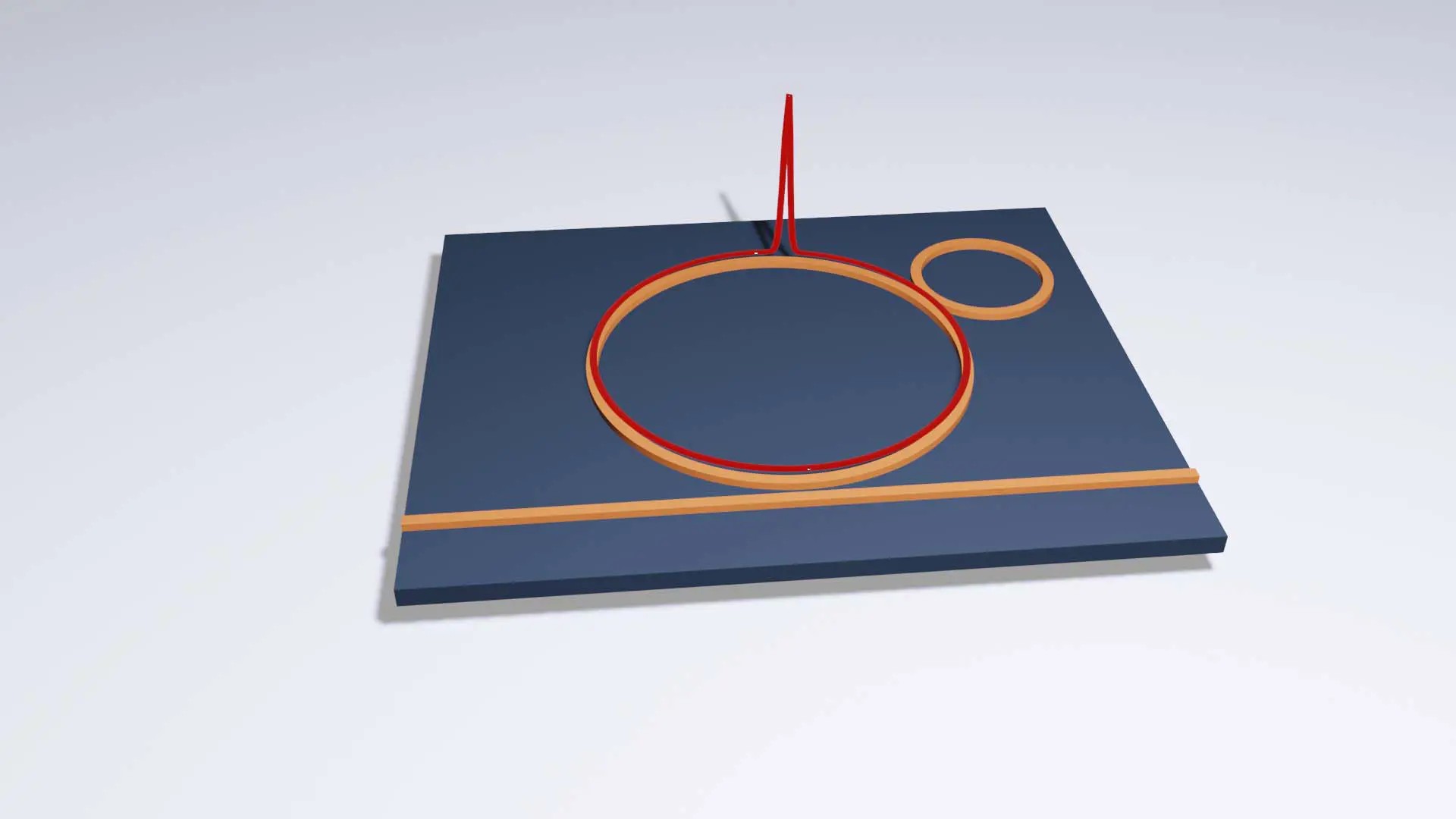
Microcombs can help us discover planets outside our solar system and track new diseases in our bodies. But current microcombs are inefficient and unable to reach their full potential. Now, researchers at Chalmers University of Technology in Sweden have scored a world first with their solution to make microcombs ten times more efficient. Their breakthrough opens the way to new discoveries in space and healthcare and paves the way for high-performance lasers in a range of other technologies.
Laser frequency combs can measure frequencies with revolutionary precision and are considered the most disruptive technological advance in the field since the birth of the laser. Simply put, a microcomb is like a ruler made of light. The principle is based on a laser sending photons that circulate inside a small cavity, a so-called microresonator, where the light is divided into a wide range of frequencies. These frequencies are precisely positioned in relation to each other, like the markings on a ruler. Thus, a new kind of light source can be created consisting of hundreds – or even thousands – of frequencies, like lasers beaming in unison.
Since virtually all optical measurements are connected to light frequencies, the microcomb has a multitude of applications – from calibrating instruments that measure signals at light-year distances in space in the search for exoplanets, to identifying and keeping track of our health via the air we exhale.
Unprecedented, ground-breaking efficiency
Up to now, a fundamental problem with microcombs has been that their efficiency was too weak to produce a wider technological impact on society. The conversion efficiency between the laser and the microcomb was too weak, meaning that only a fraction of the power contained in the laser beam was usable. But now, a Chalmers research team has successfully developed a method to increase the effect of the microcomb’s laser beams tenfold.

“We’ve developed a new method that breaks what was previously thought to be a fundamental limit for optical conversion efficiency. Our method increases the laser power of the soliton microcomb by ten times and raises its efficiency from around 1 percent to over 50 percent,” says Victor Torres Company, Professor of Photonics at Chalmers.
The new method uses two micro-resonators, as opposed to just one. They form a unique ensemble with properties that are greater than the sum of its parts. One of the resonators enables the light coming from the laser to couple with the other resonator; rather like impedance matching in electronics.
Paving the way for high-performance lasers across a range of technologies
Published in Nature Photonics, the method opens up completely new areas of application for high-performance lasers. The technology was recently patented by the project’s researchers. They have founded Iloomina AB, a company which will launch the technology onto a wider market.
“The new microcombs have transformative potential because they make high-performance laser technology available to many more markets. For example, frequency combs could be used in lidar modules for autonomous driving, or in GPS satellites and environmental sensing drones, or in data centres to enable bandwidth-intensive AI apps,” says Torres Company.
To find out more about the research project and the study, please contact:
Victor Torres Company,
torresv@chalmers.se
+46-31-772 19 04
More information:
The study was conducted by researchers Óskar B. Helgason, Marcello Girardi, Zhichao Ye, Fuchuan Lei, Jochen Schröder and Victor Torres Company at the Department of Photonics at the Department of Microtechnology and Nanoscience at Chalmers University of Technology.
Read the study “Surpassing the nonlinear conversion efficiency of soliton microcombs” published in Nature Photonics
The research project was financed by: the European Research Council and the Swedish Research Council.

- Professor, Photonics, Microtechnology and Nanoscience